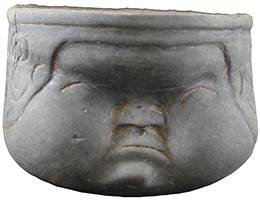Features
The Road Almost Taken
By ANDREW CURRY
Monday, February 13, 2017
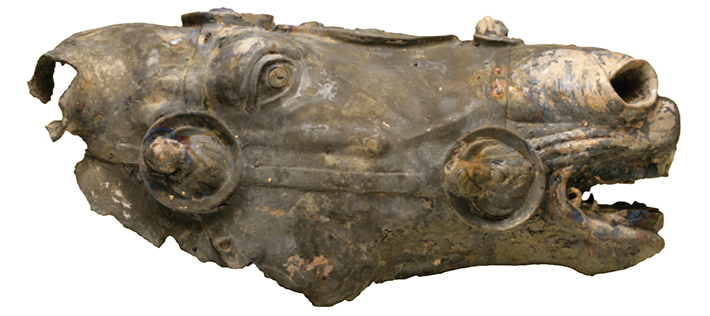 The oft-told tale of the Roman Empire’s expansion is one of violent conquest—its ever-widening borders pushed forward at sword point by Roman legions. Some of the bloodiest military engagements pitted Rome against the inhabitants of Germania, who are described by contemporary sources of the time as a loose confederation of uncivilized, quarrelsome, warlike, ferocious tribes to the north. The conventional wisdom goes that after a decades-long attempt to conquer the region east of the Rhine River finally failed in A.D. 9, Rome gave up on the Germans entirely. But what if there’s more to it than that?
The oft-told tale of the Roman Empire’s expansion is one of violent conquest—its ever-widening borders pushed forward at sword point by Roman legions. Some of the bloodiest military engagements pitted Rome against the inhabitants of Germania, who are described by contemporary sources of the time as a loose confederation of uncivilized, quarrelsome, warlike, ferocious tribes to the north. The conventional wisdom goes that after a decades-long attempt to conquer the region east of the Rhine River finally failed in A.D. 9, Rome gave up on the Germans entirely. But what if there’s more to it than that?
In the 1980s, the chance discovery of sherds of Roman-style pottery on a farm in the Lahn Valley near Frankfurt led archaeologists and historians at the German Archaeological Institute’s Romano-Germanic Commission to begin excavations. What they uncovered was a Roman site they call Waldgirmes, after a nearby modern town. The ancient name is unknown. When German Archaeological Institute archaeologist Gabriele Rasbach started working at the site in 1993, she and her colleagues assumed they had found a military installation. Ground-penetrating radar surveys revealed carefully planned streets, the foundations of wooden buildings, and postholes that are evidence of 10-foot-tall timber walls. “It was clearly just like a Roman military camp,” says archaeologist Siegmar von Schnurbein, who was the director of the commission during the Waldgirmes excavation.
Although the discoveries were exciting, they were not necessarily surprising. The Roman army, fresh from its conquest of Gaul and bent on further dominion, had been active all across Germany, and the distinctive straight lines of Roman military camps are familiar to German archaeologists. “The military interpretation here is so strong that at first we didn’t think it could be anything else,” Rasbach says. As the Waldgirmes excavations progressed, though, archaeologists began to question their initial assumptions. “We found buildings that had nothing to do with the military,” says von Schnurbein, “and we still haven’t found anything resembling a barracks.”
The excavators began to realize that the site might be something else entirely. As they dug over the course of nearly 15 years, they uncovered specialty workshops for ceramics and smithing, and administrative buildings made of local stone and timber from the thick forests nearby. They found evidence of some Roman-style residences with open porticos in front, unlike the longhouse-style buildings preferred by the locals, as well as other hallmarks of a typical Roman town, including a central public space, or forum, and a large administrative building called a basilica. “There’s actually not a single military building inside the walls,” says Rasbach. What they had uncovered was a carefully planned civilian settlement.
Artifacts from the site further reinforced the identification of Waldgirmes as a town. Of the hundreds of objects archaeologists have excavated, just five are military in nature, including a few broken spear points and shield nails that could be associated with the army. When taken together, the artifacts and structures persuaded researchers that they were dealing with an entirely novel phenomenon: a new Roman city established from scratch in the middle of a potential province. From the forum to workshops, houses, and water and sewage systems—from which sections of lead pipe have been recovered—to its sturdy outer walls enclosing 20 acres, Waldgirmes had everything a provincial capital needed. “It’s the first time we can see how Rome founded a city,” says von Schnurbein. “You can’t see that anywhere else.”
Because the site was built predominantly of wood, archaeologists have been able to establish precise dates using dendrochronology, which uses tree rings as a time stamp. They determined that construction at Waldgirmes began around 4 B.C., not long after Roman troops reached the Elbe River, pushing the empire’s range deep into Germany. Waldgirmes’ architecture and the absence of a military presence suggest a relationship between Romans and Germans that runs against both the ancient and modern versions of the accepted story. “The fact that a city was founded in the Lahn Valley without a major military presence means there was a different political situation in the region,” von Schnurbein says—that is, different from what most historians have assumed. He concludes, “The Romans thought the Germans were loyal enough that they could build a civilian settlement here.”
Kings of Cooperation
By LIZZIE WADE
Monday, March 13, 2017
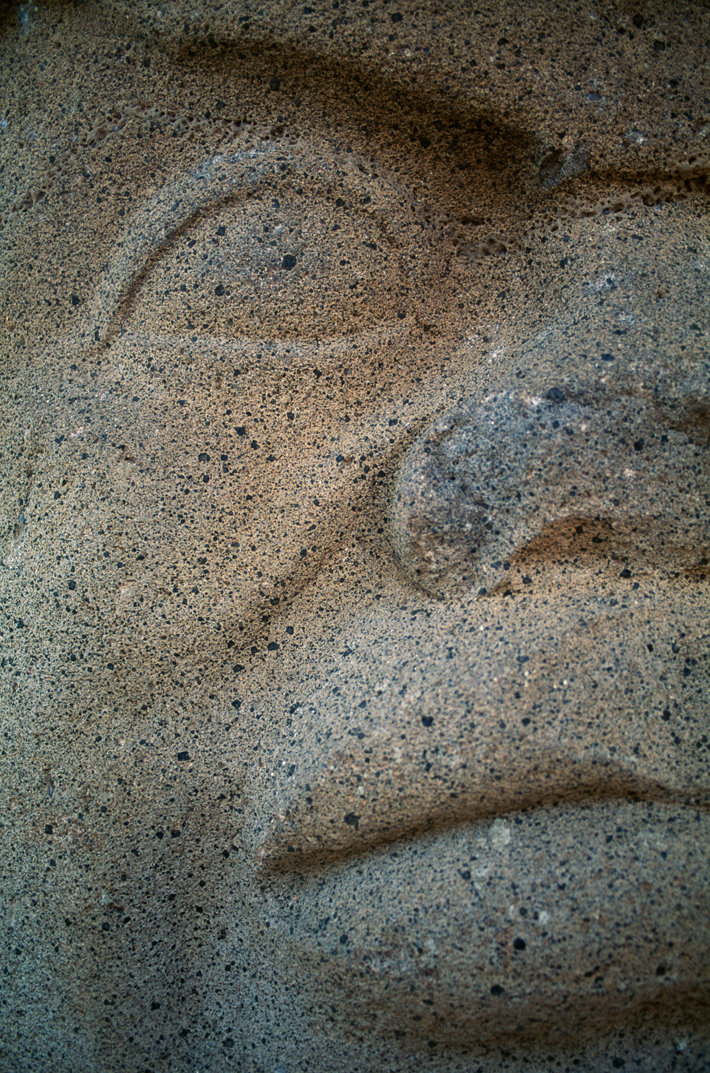 On a sweltering day in 1862 at the foot of the Tuxtla Mountains in the Mexican state of Veracruz, a farmworker was clearing a cornfield when he hit something hard and smooth lodged in the earth. He thought it was the rounded base of an iron cauldron buried upside down, and, it being the 1860s, he reported the find to the owner of the hacienda where he worked. The farmworker’s boss told him to dig up the cauldron immediately and bring it to him. As the farmworker labored to uncover the object, he realized he had found not a large iron bowl, but a gargantuan stone sculpture with a pair of glaring eyes, a broad nose, and a downturned mouth. What had appeared to be the base of a cauldron was actually the top of a helmet worn by the glowering figure. What the farmworker had unearthed was a colossal Olmec head, one of the first clues to the existence of that ancient culture.
On a sweltering day in 1862 at the foot of the Tuxtla Mountains in the Mexican state of Veracruz, a farmworker was clearing a cornfield when he hit something hard and smooth lodged in the earth. He thought it was the rounded base of an iron cauldron buried upside down, and, it being the 1860s, he reported the find to the owner of the hacienda where he worked. The farmworker’s boss told him to dig up the cauldron immediately and bring it to him. As the farmworker labored to uncover the object, he realized he had found not a large iron bowl, but a gargantuan stone sculpture with a pair of glaring eyes, a broad nose, and a downturned mouth. What had appeared to be the base of a cauldron was actually the top of a helmet worn by the glowering figure. What the farmworker had unearthed was a colossal Olmec head, one of the first clues to the existence of that ancient culture.
Over the next century and a half, archaeologists would uncover many more of these heads along the Mexican Gulf Coast and discover the ancient cities where they were carved. The site of that first fateful discovery became known as Tres Zapotes, after a type of fruit tree common in the area. Along with the sites of San Lorenzo and La Venta, Tres Zapotes was one of the great capitals of the Olmec culture, which emerged by 1200 B.C. as one of the first societies in Mesoamerica organized into a complex social and political hierarchy.
The key to the Olmecs’ rise appears to have been a strong, centralized monarchy. The colossal heads, each one depicting a particular individual, are likely portraits of the Olmec kings who ruled from ornate palaces at San Lorenzo and La Venta. Even though Tres Zapotes yielded the earliest evidence for Olmec kingship, 20 years of survey and excavations there suggest that, at its height, the city adopted a very different form of government, one in which power was shared among multiple factions. Further, while other Olmec capitals lasted between 300 and 500 years, Tres Zapotes managed to survive for nearly two millennia. The city, therefore, may have weathered intense cultural and political shifts not by doubling down on traditional Olmec monarchy, but by distributing power among several groups that learned to work together. According to University of Kentucky archaeologist Christopher Pool, who has spent his career excavating the city, that cooperative rule may have helped Tres Zapotes endure for centuries after the rest of Olmec society collapsed.
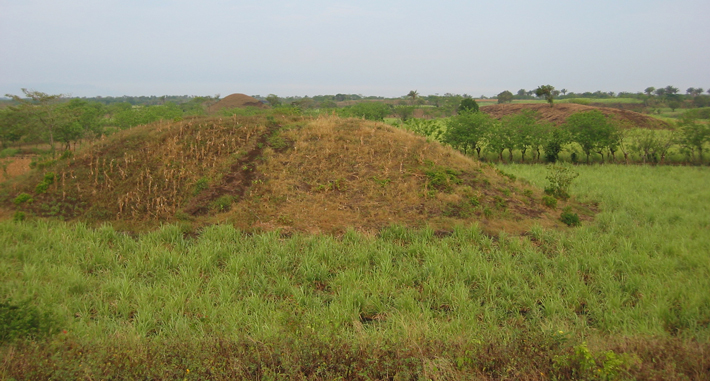 When Pool arrived at Tres Zapotes in 1996, he was the first archaeologist in over 40 years to take a serious interest in the site. Tres Zapotes had been recognized as an important Olmec center since shortly after the discovery of the colossal head, and in the decades to follow it had yielded a plethora of intricate figurines and stone monuments, including another colossal head. But important details of the site’s history remained unknown, including its size and how long it had been occupied. Pool set out to map the full extent of the ancient city, survey the ceramics he found scattered across the ground, and excavate the most compelling areas.
When Pool arrived at Tres Zapotes in 1996, he was the first archaeologist in over 40 years to take a serious interest in the site. Tres Zapotes had been recognized as an important Olmec center since shortly after the discovery of the colossal head, and in the decades to follow it had yielded a plethora of intricate figurines and stone monuments, including another colossal head. But important details of the site’s history remained unknown, including its size and how long it had been occupied. Pool set out to map the full extent of the ancient city, survey the ceramics he found scattered across the ground, and excavate the most compelling areas.
Battling dense fields of sugarcane, swarms of mosquitoes, and the occasional poisonous snake, Pool painstakingly reconstructed the layout of Tres Zapotes and how it had changed over time, and began to be able to compare it to the other great Olmec capitals. Between 1000 and 400 B.C., in a period called the Middle Formative, Tres Zapotes was a minor regional center covering around 200 acres. At the time, La Venta and its all-powerful king dominated the Olmec heartland. Like its predecessor San Lorenzo, which flourished between 1200 and 900 B.C., La Venta was organized around a single dominant plaza featuring administrative buildings, elaborate monuments, and elite residences. The kings whose likenesses are memorialized by the colossal heads lived in palaces that brimmed with precious exotic goods, such as greenstone imported from Guatemala and polished iron-ore mirrors from Oaxaca and Chiapas. Their subjects, meanwhile, lived in modest households arrayed around the central plaza. The concentration of wealth and power in the center of the city, as well as art that glorified individual rulers, suggests that “the Olmecs had a cult of the ruler,” says Barbara Stark, an archaeologist at Arizona State University who works on the Gulf Coast of Mexico.
The First American Revolution
By ERIC A. POWELL
Monday, February 13, 2017
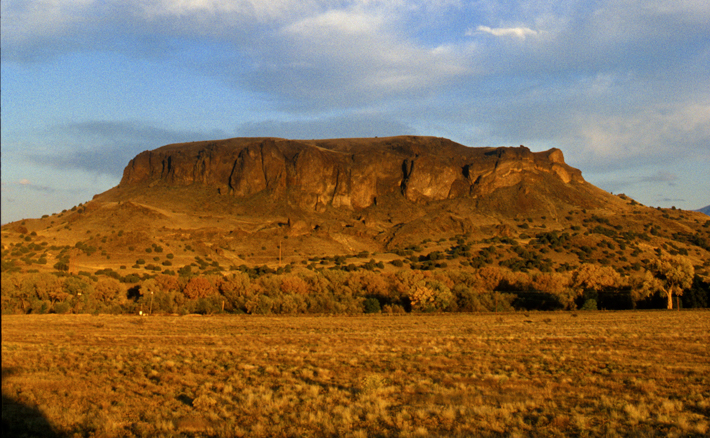
An isolated volcanic outcropping, Black Mesa rises high above the floodplain of northern New Mexico’s Rio Grande Valley. The land it’s on belongs to the people of San Ildefonso Pueblo, whose ancestors have farmed near the base of the mesa since at least A.D. 1300. A natural fortress, Black Mesa was the scene of dramatic events in 1694, when Pueblo warriors encamped on its summit withstood a months-long Spanish siege. That conflict was the culmination of what is known today as the Pueblo Revolt, an indigenous uprising that began on August 10, 1680. On that date, Pueblo warriors from 19 separate villages carried out a coordinated attack on Spanish missionaries and colonists across New Mexico. Within a few days, they had driven virtually all Spaniards out of the province. For the next decade, apart from occasional Spanish military expeditions, the Native American peoples of New Mexico enjoyed total independence. “The Revolt period is still so important to Pueblo identity,” says University of Pennsylvania archaeologist Joseph Aguilar, a member of San Ildefonso Pueblo. “In many ways it shaped the world we live in today.”
Historians have relied primarily on Spanish accounts to understand the period, but recently, archaeologists have begun to uncover a richer picture of Pueblo life in the aftermath of what some scholars call the “first American revolution.” Working closely with Pueblo communities to study sites established after the Revolt, archaeologists have found evidence for tremendous change in Pueblo society as well as widespread revival of traditions that had been suppressed by the Spanish. A major focus of this recent research has been on defensive villages built on mesa tops during the 14 years of Pueblo independence. Aguilar is the latest archaeologist to explore one of these sites and is now working at Black Mesa, mapping the Revolt-era settlement there and seeking to understand the role the site played when Spanish forces eventually returned to New Mexico. “We’re finding the Spanish accounts don’t always match up with what we see on the ground,” says Aguilar. “The historical documents are an important resource, but archaeology can help give us the native perspective on what happened.”
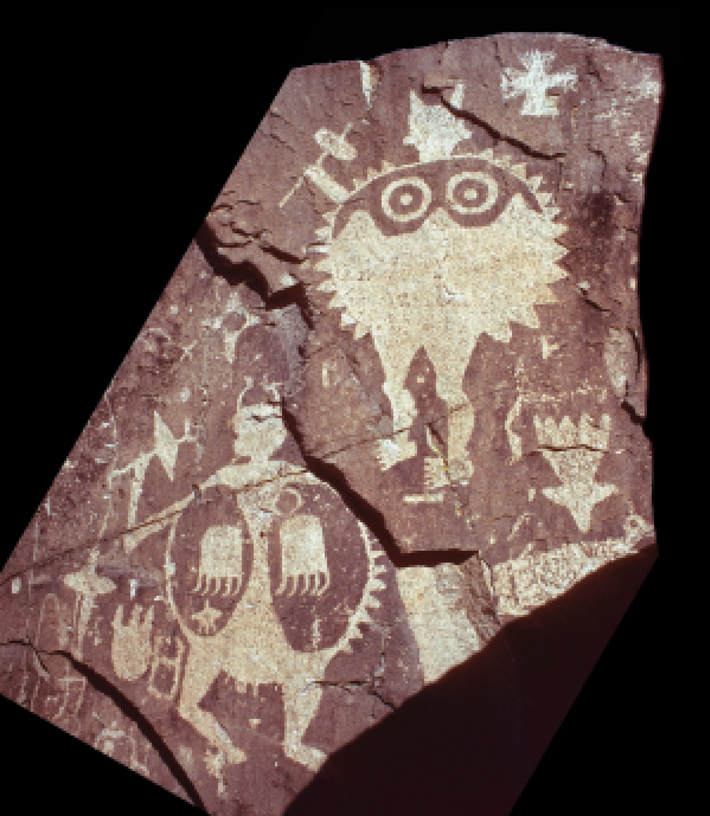 The Pueblo Revolt came after nearly 100 years of Spanish rule in the Southwest. Spaniards first colonized New Mexico in 1591, when a group led by Governor Juan de Oñate established settlements among the Pueblo farmers living in the northern Rio Grande Valley. The Pueblo peoples shared an agricultural way of life, but were linguistically and culturally diverse. They inhabited upward of 90 villages, known as pueblos.
The Pueblo Revolt came after nearly 100 years of Spanish rule in the Southwest. Spaniards first colonized New Mexico in 1591, when a group led by Governor Juan de Oñate established settlements among the Pueblo farmers living in the northern Rio Grande Valley. The Pueblo peoples shared an agricultural way of life, but were linguistically and culturally diverse. They inhabited upward of 90 villages, known as pueblos.
In New Mexico, as they did elsewhere in the New World, Spanish authorities introduced the encomienda and repartimiento systems, in which Native Americans paid heavy taxes to the government and were obligated to work for Spanish colonists. Franciscan missionaries were among those who initially settled the province, and they cracked down on traditional religious practices, ordering the Pueblo people to build churches in their villages and installing bells that became a hated symbol of colonialism. Their presence was intended to impose a Spanish and Christian conception of time. In some cases natives were also forced into new villages that were organized into European-style grids, rather than the contiguous groupings of rooms known as room blocks of a traditional pueblo.
Advertisement
Also in this Issue:
Advertisement
IN THIS ISSUE
Features
The First American Revolution
Kings of Cooperation
The Road Almost Taken
Letter from Philadelphia
From the Trenches
Digging up Digital Music
Off the Grid
Revisiting Montezuma Castle
Secret Spaces
Something New for Sutton Hoo
A Surprise City in Thessaly
Zinc Zone
Behind the Curtain
Royal Gams
A Mix of Faiths
Neolithic FaceTime
Bathing, Ancient Roman Style
The Church that Transformed Norway
Siberian William Tell
A Traditional Neanderthal Home
Artifact
Self-expression in the Bronze Age
Advertisement

Recent Issues
-
 May/June 2024
May/June 2024
-
 March/April 2024
March/April 2024
-
 January/February 2024
January/February 2024
-
 November/December 2023
November/December 2023
-
 September/October 2023
September/October 2023
-
 July/August 2023
July/August 2023
-
 May/June 2023
May/June 2023
-
 March/April 2023
March/April 2023
-
 January/February 2023
January/February 2023
-
 November/December 2022
November/December 2022
-
 September/October 2022
September/October 2022
-
 July/August 2022
July/August 2022
-
 May/June 2022
May/June 2022
-
 March/April 2022
March/April 2022
-
 January/February 2022
January/February 2022
-
 November/December 2021
November/December 2021
-
 September/October 2021
September/October 2021
-
 July/August 2021
July/August 2021
-
 May/June 2021
May/June 2021
-
 March/April 2021
March/April 2021
-
 January/February 2021
January/February 2021
-
 November/December 2020
November/December 2020
-
 September/October 2020
September/October 2020
-
 July/August 2020
July/August 2020
-
 May/June 2020
May/June 2020
-
 March/April 2020
March/April 2020
-
 January/February 2020
January/February 2020
-
 November/December 2019
November/December 2019
-
 September/October 2019
September/October 2019
-
 July/August 2019
July/August 2019
-
 May/June 2019
May/June 2019
-
 March/April 2019
March/April 2019
-
 January/February 2019
January/February 2019
-
 November/December 2018
November/December 2018
-
 September/October 2018
September/October 2018
-
 July/August 2018
July/August 2018
-
 May/June 2018
May/June 2018
-
 March/April 2018
March/April 2018
-
 January/February 2018
January/February 2018
-
 November/December 2017
November/December 2017
-
 September/October 2017
September/October 2017
-
 July/August 2017
July/August 2017
-
 May/June 2017
May/June 2017
-
 March/April 2017
March/April 2017
-
 January/February 2017
January/February 2017
-
 November/December 2016
November/December 2016
-
 September/October 2016
September/October 2016
-
 July/August 2016
July/August 2016
-
 May/June 2016
May/June 2016
-
 March/April 2016
March/April 2016
-
 January/February 2016
January/February 2016
-
 November/December 2015
November/December 2015
-
 September/October 2015
September/October 2015
-
 July/August 2015
July/August 2015
-
 May/June 2015
May/June 2015
-
 March/April 2015
March/April 2015
-
 January/February 2015
January/February 2015
-
 November/December 2014
November/December 2014
-
 September/October 2014
September/October 2014
-
 July/August 2014
July/August 2014
-
 May/June 2014
May/June 2014
-
 March/April 2014
March/April 2014
-
 January/February 2014
January/February 2014
-
 November/December 2013
November/December 2013
-
 September/October 2013
September/October 2013
-
 July/August 2013
July/August 2013
-
 May/June 2013
May/June 2013
-
 March/April 2013
March/April 2013
-
 January/February 2013
January/February 2013
-
 November/December 2012
November/December 2012
-
 September/October 2012
September/October 2012
-
 July/August 2012
July/August 2012
-
 May/June 2012
May/June 2012
-
 March/April 2012
March/April 2012
-
 January/February 2012
January/February 2012
-
 November/December 2011
November/December 2011
-
 September/October 2011
September/October 2011
-
 July/August 2011
July/August 2011
-
 May/June 2011
May/June 2011
-
 March/April 2011
March/April 2011
-
 January/February 2011
January/February 2011
Advertisement





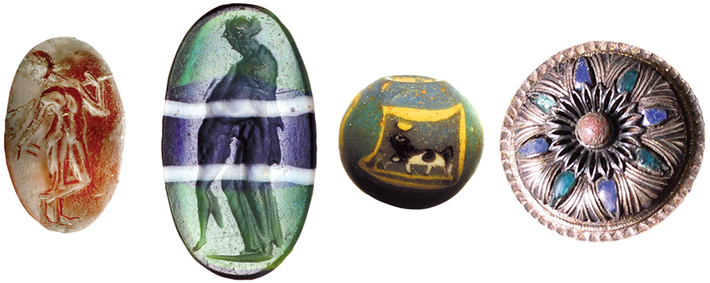 The Romans’ motivation in establishing Waldgirmes, at least at first, may have been trade. Ample pottery fragments provide evidence of relationships with provinces of the Roman Empire. The majority of the pottery is turned on potter’s wheels in the Roman style, and was probably imported from Gaul or Roman settlements north of the Alps. But 18 percent of the broken pots were local German ware, suggesting that Waldgirmes’ residents also traded with their barbarian neighbors. Ordinarily, at Roman military sites in Germany, local pottery makes up a mere tenth of a percent of the total. In addition to ceramics, silver pins and glass beads uncovered at the site might have been sold by Roman merchants who brought them from home. But von Schnurbein believes relations might have encompassed more than trade. “There’s plenty of evidence Germans might have lived in Waldgirmes,” he says, citing typical German jewelry found there and variations in house foundation styles at the site, reflecting both Roman and German styles. “It’s not just trade goods and ceramics, but signs the locals were at home there, or lived right nearby and had intensive contact.”
The Romans’ motivation in establishing Waldgirmes, at least at first, may have been trade. Ample pottery fragments provide evidence of relationships with provinces of the Roman Empire. The majority of the pottery is turned on potter’s wheels in the Roman style, and was probably imported from Gaul or Roman settlements north of the Alps. But 18 percent of the broken pots were local German ware, suggesting that Waldgirmes’ residents also traded with their barbarian neighbors. Ordinarily, at Roman military sites in Germany, local pottery makes up a mere tenth of a percent of the total. In addition to ceramics, silver pins and glass beads uncovered at the site might have been sold by Roman merchants who brought them from home. But von Schnurbein believes relations might have encompassed more than trade. “There’s plenty of evidence Germans might have lived in Waldgirmes,” he says, citing typical German jewelry found there and variations in house foundation styles at the site, reflecting both Roman and German styles. “It’s not just trade goods and ceramics, but signs the locals were at home there, or lived right nearby and had intensive contact.”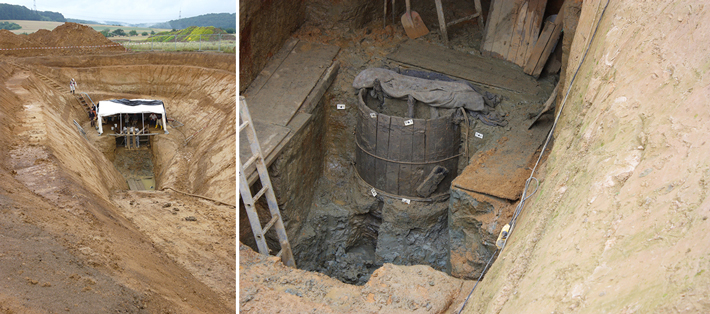 In 2009, the team decided to excavate a well that had been discovered in the center of the settlement. It was to be the project’s last major phase. The well’s shaft was an estimated 20 feet deep, and, in order to prevent it from collapsing as they dug, they came at the structure from the side by creating a downward-slanting pit. When they reached what they thought was the bottom, it turned out the well was significantly deeper than they had envisaged. Working far into autumn, the team kept digging until, finally, nearly 33 feet below the surface, they found a 265-gallon, 63-by-39-inch wooden wine cask, placed there two millennia ago to hold the bottom of the well open. The barrel’s wooden slats had been preserved by the cold, wet, anaerobic conditions below the surface. The cask was packed like a junk shop, its contents a reflection of the settlement’s last days. At the top was a bronze shoe, apparently a fragment of one of the mounted statues. Fence posts, a shovel, an ox yoke, a well cover, wooden buckets, tool handles, and sticks had also been tossed into the well, along with eight heavy millstones. They, like the limestone pediments, had been imported from hundreds of miles away, this time from near modern-day Aachen to the northwest. “The millstones were virtually unused,” says Rasbach, evidence of the settlement’s short lifespan.
In 2009, the team decided to excavate a well that had been discovered in the center of the settlement. It was to be the project’s last major phase. The well’s shaft was an estimated 20 feet deep, and, in order to prevent it from collapsing as they dug, they came at the structure from the side by creating a downward-slanting pit. When they reached what they thought was the bottom, it turned out the well was significantly deeper than they had envisaged. Working far into autumn, the team kept digging until, finally, nearly 33 feet below the surface, they found a 265-gallon, 63-by-39-inch wooden wine cask, placed there two millennia ago to hold the bottom of the well open. The barrel’s wooden slats had been preserved by the cold, wet, anaerobic conditions below the surface. The cask was packed like a junk shop, its contents a reflection of the settlement’s last days. At the top was a bronze shoe, apparently a fragment of one of the mounted statues. Fence posts, a shovel, an ox yoke, a well cover, wooden buckets, tool handles, and sticks had also been tossed into the well, along with eight heavy millstones. They, like the limestone pediments, had been imported from hundreds of miles away, this time from near modern-day Aachen to the northwest. “The millstones were virtually unused,” says Rasbach, evidence of the settlement’s short lifespan.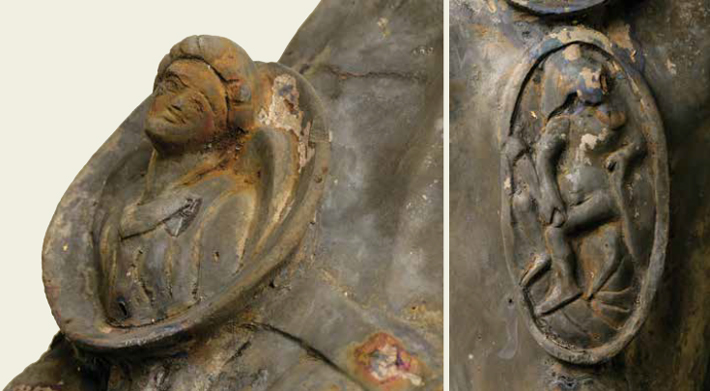 Rasbach and her team were astounded to find a life-size bronze horse’s head wedged underneath the millstones. As excavators worked, the copper salts in the bronze reacted with air for the first time in nearly 2,000 years and briefly turned the metal purple. The head was barely dented, despite the millstones that had sat on top of it. “The well must have had water in it that let the millstones float down gently,” Rasbach says. The head had probably been part of a life-size sculpture of a mounted emperor that stood as the centerpiece of the settlement’s forum on top of one of the five limestone pedestals.
Rasbach and her team were astounded to find a life-size bronze horse’s head wedged underneath the millstones. As excavators worked, the copper salts in the bronze reacted with air for the first time in nearly 2,000 years and briefly turned the metal purple. The head was barely dented, despite the millstones that had sat on top of it. “The well must have had water in it that let the millstones float down gently,” Rasbach says. The head had probably been part of a life-size sculpture of a mounted emperor that stood as the centerpiece of the settlement’s forum on top of one of the five limestone pedestals.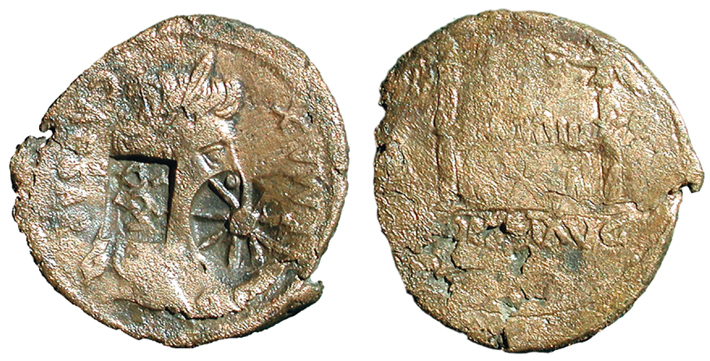 The Teutoburg slaughter sealed the settlement’s fate. Archaeologists have found no coins dated after A.D. 9, and within a few years after the battle, Waldgirmes’ Roman residents seem to have packed up and left, abandoning the city, its forum, and its shattered statues. “There are no mass graves or signs of fighting in the streets,” says Ortisi. “From what we can tell, the evacuation was planned.”
The Teutoburg slaughter sealed the settlement’s fate. Archaeologists have found no coins dated after A.D. 9, and within a few years after the battle, Waldgirmes’ Roman residents seem to have packed up and left, abandoning the city, its forum, and its shattered statues. “There are no mass graves or signs of fighting in the streets,” says Ortisi. “From what we can tell, the evacuation was planned.”
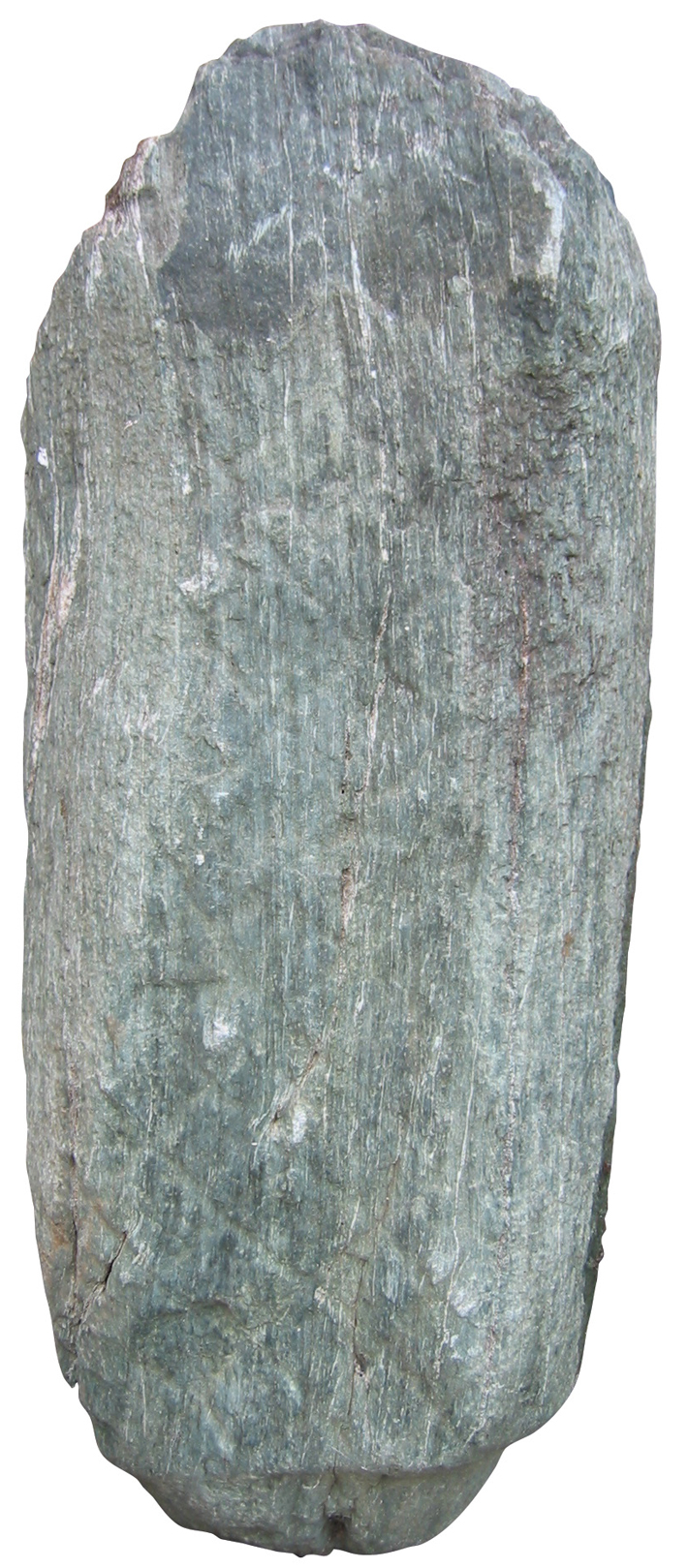 Researchers believe that it’s possible many of them moved to Tres Zapotes, 60 miles to the west. The city quickly expanded, covering 1,200 acres by the beginning of the Late Formative, shortly after 400 B.C. As he mapped the site’s growth, Pool discovered that the newly dominant Tres Zapotes didn’t look much like its predecessors, San Lorenzo and La Venta. They had both been organized around one outsized and opulent central plaza. In Tres Zapotes, however, Pool identified four separate plazas evenly spaced throughout the city, each about half a mile apart and ranging from about four to nine acres in size. “No one of these plaza groups is dramatically larger than the others,” Pool says. He also discovered that their layouts are nearly identical. Each has a temple pyramid on its west side, a long platform along its north edge, and a low platform set on an east-west line through its middle. According to John Clark, an archaeologist at Brigham Young University who studies the Formative period, “The site pattern is completely different from anything else I know for an Olmec site.” It’s so different, in fact, that archaeologists have dubbed the Late Formative culture at Tres Zapotes “epi-Olmec.”
Researchers believe that it’s possible many of them moved to Tres Zapotes, 60 miles to the west. The city quickly expanded, covering 1,200 acres by the beginning of the Late Formative, shortly after 400 B.C. As he mapped the site’s growth, Pool discovered that the newly dominant Tres Zapotes didn’t look much like its predecessors, San Lorenzo and La Venta. They had both been organized around one outsized and opulent central plaza. In Tres Zapotes, however, Pool identified four separate plazas evenly spaced throughout the city, each about half a mile apart and ranging from about four to nine acres in size. “No one of these plaza groups is dramatically larger than the others,” Pool says. He also discovered that their layouts are nearly identical. Each has a temple pyramid on its west side, a long platform along its north edge, and a low platform set on an east-west line through its middle. According to John Clark, an archaeologist at Brigham Young University who studies the Formative period, “The site pattern is completely different from anything else I know for an Olmec site.” It’s so different, in fact, that archaeologists have dubbed the Late Formative culture at Tres Zapotes “epi-Olmec.”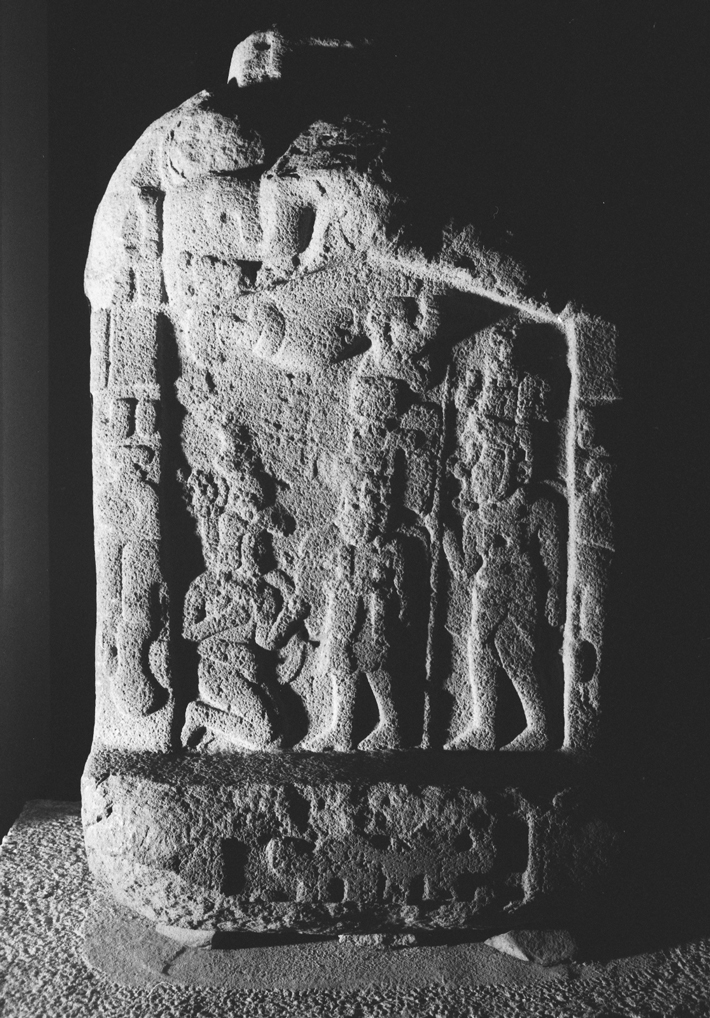 “With the declining importance of the nobility and other kinds of elites, you get more economic equality,” says Richard Blanton, an anthropologist at Purdue University who was among the first to propose that such societies may have existed in Mesoamerica. Cooperative governments also tend to produce different kinds of art than monarchies, Blanton says. Rather than monuments and tombs that glorify individual rulers, polities with shared power tend to separate the idea of authority from any particular person. That’s what Pool sees at Tres Zapotes. The most elaborate monument he’s found from the Late Formative period shows a ruler emerging out of the cleft brow of a monster to connect the underworld, the earth, and the sky. “This reasonably represents the ruler as the axis mundi, or the central axis of the earth,” says Pool. This is a common theme in Olmec iconography. But unlike earlier Olmec art, including the colossal heads, the carving is not naturalistic and doesn’t seem to represent a particular ruler. “The focus seems to be less on the person than it does on the office,” Pool says. At Tres Zapotes, the idea of rulership, rather than an actual monarch, was what mattered.
“With the declining importance of the nobility and other kinds of elites, you get more economic equality,” says Richard Blanton, an anthropologist at Purdue University who was among the first to propose that such societies may have existed in Mesoamerica. Cooperative governments also tend to produce different kinds of art than monarchies, Blanton says. Rather than monuments and tombs that glorify individual rulers, polities with shared power tend to separate the idea of authority from any particular person. That’s what Pool sees at Tres Zapotes. The most elaborate monument he’s found from the Late Formative period shows a ruler emerging out of the cleft brow of a monster to connect the underworld, the earth, and the sky. “This reasonably represents the ruler as the axis mundi, or the central axis of the earth,” says Pool. This is a common theme in Olmec iconography. But unlike earlier Olmec art, including the colossal heads, the carving is not naturalistic and doesn’t seem to represent a particular ruler. “The focus seems to be less on the person than it does on the office,” Pool says. At Tres Zapotes, the idea of rulership, rather than an actual monarch, was what mattered.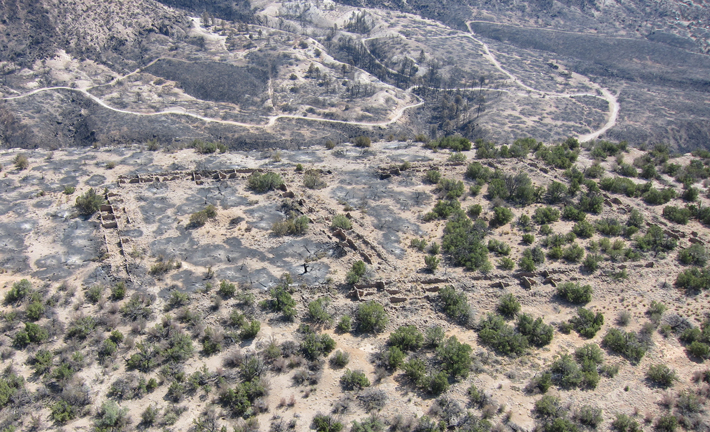
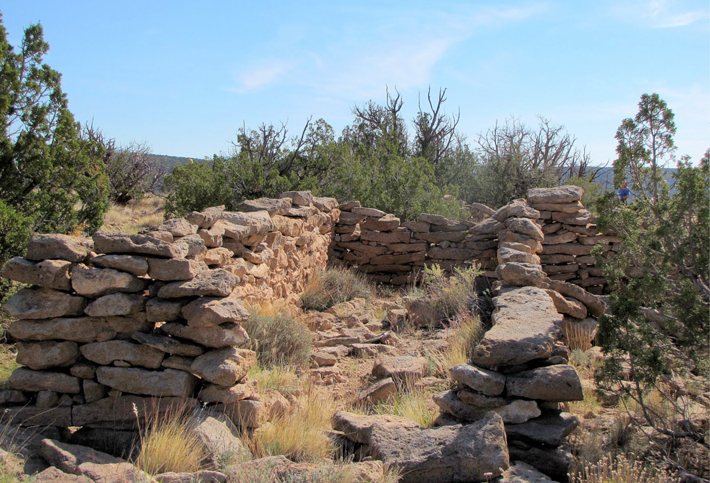
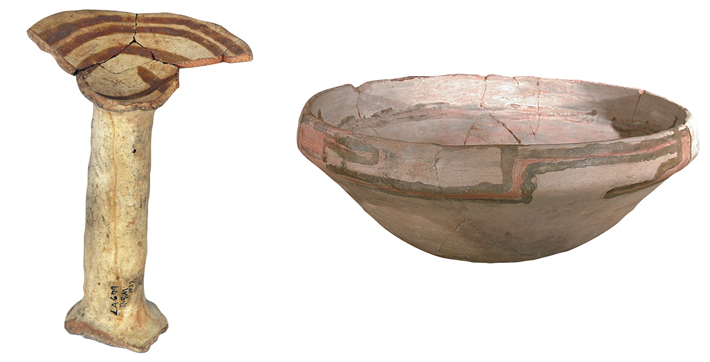
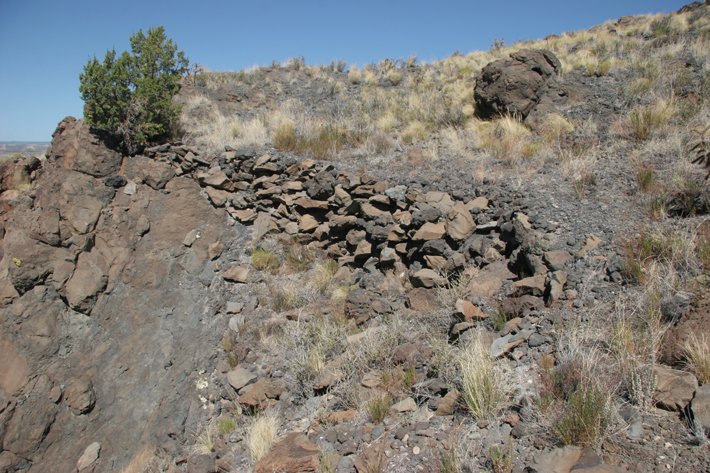
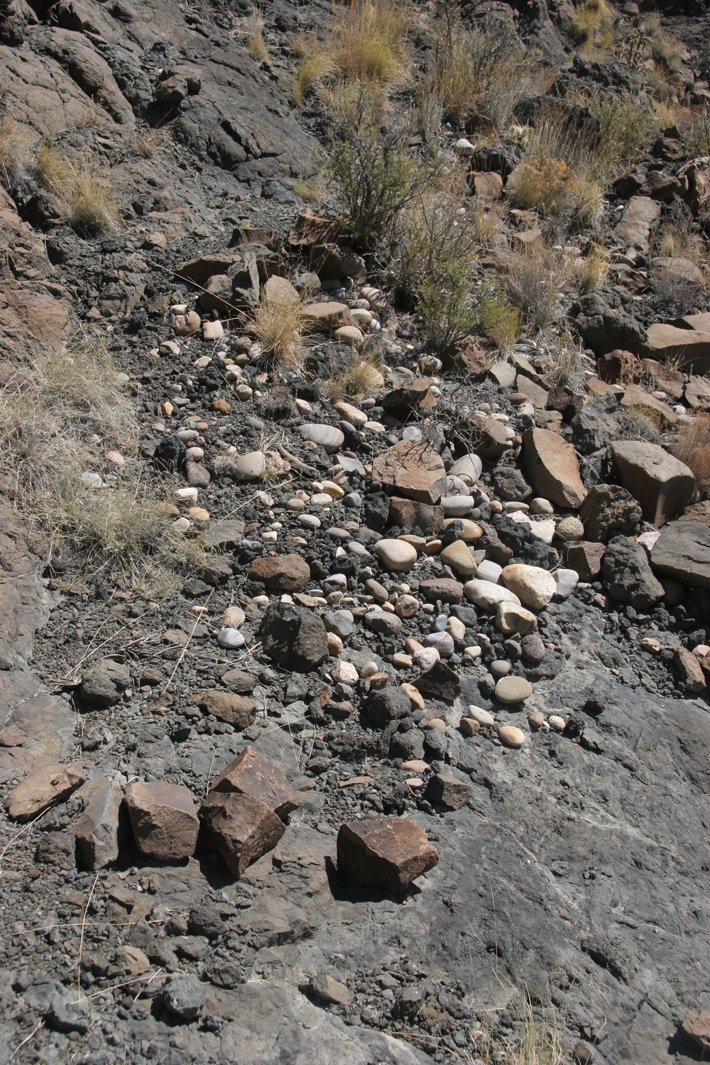 According to the account left by Vargas in his journals, there were as many as 2,000 warriors on Black Mesa, but, after studying the site, Aguilar thinks that may have been an exaggeration. Vargas also maintained that he reached the summit of the mesa, but according to Aguilar, his description doesn’t match the defensive alignments or the topography. “I read that and I think, ‘Come on, Vargas, there’s no way you made it to the summit.’” The Spanish governor may have had reason to exaggerate his feats, because, while he captured the other sites, he did not succeed at Black Mesa. In September of 1694, after months of protracted siege, the warriors came down from Black Mesa. “Vargas would say they surrendered, but I don’t think of it that way,” says Aguilar. “They came down on their own terms, after long negotiations.”
According to the account left by Vargas in his journals, there were as many as 2,000 warriors on Black Mesa, but, after studying the site, Aguilar thinks that may have been an exaggeration. Vargas also maintained that he reached the summit of the mesa, but according to Aguilar, his description doesn’t match the defensive alignments or the topography. “I read that and I think, ‘Come on, Vargas, there’s no way you made it to the summit.’” The Spanish governor may have had reason to exaggerate his feats, because, while he captured the other sites, he did not succeed at Black Mesa. In September of 1694, after months of protracted siege, the warriors came down from Black Mesa. “Vargas would say they surrendered, but I don’t think of it that way,” says Aguilar. “They came down on their own terms, after long negotiations.”